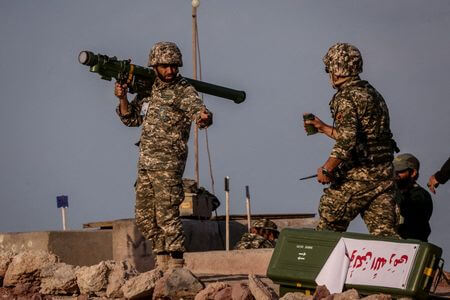
Iran – Evolution from Rich Cultural Heritage to a Regional Power in Perpetual Conflict

Iran is a regional and middle power, which made rapid progress from being one of the oldest civilizations on this planet, with a geopolitically strategic location in the Asian continent. It is a founding member of the United Nations, the ECO, OIC and the OPEC. It has large reserves of fossil fuels, including the world’s second-largest natural gas supply and the fourth-largest proven oil reserves. Ever since the Islamic Republic of Iran came into being in 1979, it has been having constant confrontation with the USA.
USA Iran Relations
Iran and USA have had no formal diplomatic relations ever since April 1980 (more information on this given ahead). The Swiss Embassy in Iran represents US interests and Pakistan’s Embassy in Washington DC represents Iranian interests. In terms of Diplomatic Conventions, such countries in the absence of diplomatic relations with a particular country choose a neutral country’s Mission in that country to represent their interests. Ever since the advent in Iran (1979) of Al Khamenei, the Spiritual Leader of Iran came back from self-exile in Paris triumphantly, after the self-exile of Shah of Iran- Mohammed Reza Pahlavi from Iran, taking shelter in Egypt. The relations between Iran and USA began to deteriorate. Iran, which had been stridently progressing with western outlook under the long regime of Shah of Iran from 16 September 1941 to 11 February 1979 and still earlier under his father Reza Shah, the first Shah of Iran, to start the dynasty from 15 December 1925 to 16 September 1941.
The long 54 years of Shah of Iran regime was not a benign regime; considered oppressive and autocratic with a totalitarian inflection, but it largely conformed to the US policies in every aspect of bilateral interaction. In contrast, the regime under Ayatollah Khamenei was equally repressive, opposing any talk of western culture, conservative (more for women) and based on Islamic values, devoid of any democracy, but was highly appealing to Muslim followers of Imam’s Line. The Spiritual Leader Khamenei was Supreme, wherever his hand would sway on the landscape of Iran. Al Khamenei banned direct talks with USA and with passage of time became antagonistic to Iran’s aspirations with nothing in common. Over the last few years, following agitations by the natives, some contours of democracy and some liberal economic values started sprouting.
The lasting blow to US Iran relations came with popularly known as Hostage Crisis (1979-1981). It was on 4 November 1979 that a group of Muslim students, followers of Imam’s Line stormed the US Embassy in Tehran and took 52 US diplomats as hostages. This hostage’s crisis continued for a record 444 days when Jimmy Carter was President of the USA. Finally, the hostage crisis ended only on 20 January 1981 when the new President Ronald Reagan took over the office. The acrimonious relations between USA and Iran have continued since then and even today these are in the same state with every event, development on either side providing a fresh impetus to worsening of relations. The two countries unfortunately do not have commonality of traditional customs, cultural value systems, art of living, earning of livelihood outlook of the people, gender equality etc.
The oil resources of Iran which were increasingly explored during 1960s, 1970s adding to the revenues of Iran, which came like a windfall. Iran also started focusing on enrichment of uranium at its numerous centrifuges and development of nuclear weapons, missiles, almost becoming a nuclear weapon State, but not formally accepted as such by the world nuclear comity. Iranian trade also grew considerably in economic terms and its armed forces enhanced its threshold of operational readiness. It is ironical that it was in 1957 that USA had then helped Iran in its development of Nuclear Program for peaceful purposes, which boomeranged on USA itself in the foreseeable future. These inherent strengths of Iran started getting sharper with passage of time as Iran started to flex its muscles outside the shores of Iran, manifesting its belligerent character. No wonder the schism between Iran and USA continues to grow wider.
Iran Iraq War 1981-1989
The near ten year long war between Iraq and Iran from 1981 to 1989 gave strength to Iran even while neither of them was a winner after spending millions of dollars by both sides. But it was somewhat dampening for USA as it had sided with Iraq. (The turn of events is strange as it were US forces which came to Iraq in 2003, deposed President Saddam Husain and executed him too, in December 2006). Iran’s nuclear program has been a constant eye shore to USA. Since 2003, USA had started openly accusing Iran in this regard. It was in 2006 that US Sanctions were imposed on Iran for the first time, giving Iran difficult times in financial transactions. The bank assets of Iran in USA were also frozen. The regime of physical attacks on one another’s assets, interests, warships, oil tankers passing through Persian Gulf- the Straits of Hormuz also began. Iran started helping the rebels in Syria (2011 onwards), in Yemen (2011 onwards) and in Lebanon (from 1979 onwards, a constant supporter to Hezbollah, an ultra-militant rebel group in Lebanon). In the process, Iran has become a hard enemy of USA, Israel and Saudi Arabia.
The olive leaf of friendship was picked up by US President Barack Obama in 2015 when after long US-Iran negotiations, a Joint Comprehensive Plan of Action (JCPoA), popularly known as US- Iran nuclear Agreement was signed on 14 July 2015 by USA, UK, France, Russia, China and Germany (P-5 plus Germany), who all participated during the negotiations with Iran. Sanctions were gradually lifted by USA, Iran put on hold its nuclear programs and relations between USA and Iran started picking up, but ought not to be in state of bliss for a long period. On 8 May 2018, US President Trump withdrew from US-Iran Nuclear Agreement and reimposed all Sanctions on Iran. The relations took a new dip. It may be noted that the five other signatories from the US-Iran Nuclear Agreement have not walked away from the said Nuclear Agreement and technically for them it is still valid, but for all practical purposes it is a closed chapter.
President Trump in his blues, ordered air strikes on Iran on 20 June 2019 and the D-day was fixed for 21 June 2019. But dramatically10 minutes before the air strikes by USA, President Trump withdrew his order saying that there would have been a lot of deaths and collateral damage in the process, however he did not endorse that.
President Joe Biden, President of the USA
President Joe Biden has picked up the thread from where former President left in 2019. To end the acrimonious relations between USA and Iran, negotiations between USA and Iran have commenced. Iran is hopeful and so is USA. But another discordant note has emerged between USA and Iran with the election of new President of Iran- Mr Ebrahim Raisi, Chief Justice of Iran on 18 June 2021, defeating the incumbent President Hassan Rouhani in power since 3 August 2013. The new President has been sworn in on 3 August 2021. President elect Ebrahim Raisi is under US Sanctions for human rights violations, in his role as former Chief Justice of Iran. This attaches a hard image to President Ebrahim Raisi.
Ever since US President Joe Biden assumed office on 20 January 2021; he has been very keen to mend his country’s relations with Iran. As such the first thing President Biden did in this direction was to initiate US-Iran dialogue to discuss (i) the revival of US-Iran Nuclear Agreement and (ii) to revisit the regime of US Sanctions, reintroduced by the former President Trump against Iran. As for the said US-Iran Nuclear Agreement, only USA has walked out of it in 2018, while the other signatories from P-5, Germany, the co-signatories still hold the Agreement as binding.
US-Iran talks between the respective negotiators have taken place for five months until June 2021 at Vienna. On 29 November 2021, the talks have been revived and the results are still to follow. Iran is more interested in lifting of US Sanctions than the revival of the Agreement itself. The talks are most likely to end in a state of animated suspension. The relations between USA and Iran emanate from a total distrust of one another, fueled by Iran’s desire to rise as a world power, ready to pounce upon its distractors while helping the rebels in certain countries against the government forces there, combined with its growing oil resources and nuclear weapons- which have all given a twist to US- Iran relations, getting more strained and becoming fragile to handle- ever ready to become brittle with a little shock.
Moving away from the realm of US-Iran relations, the fate of US-Iran Nuclear Agreement at Vienna; Iran has become a power in itself – getting friends and foes alike. Iran has lately become most assiduous provider of drone technology to its proxies and friends together with help in men, arms and ammunition, viz. in Lebanon, Yemen, Syria, Gaza Strip. Iran is pitted against US, the West, Israel and Saudi Arabia and so on. With the Taliban coming into power in Afghanistan on 15 August 2021, Iran along with Russia, China, Pakistan and Central Asian Republics of Uzbekistan, Tajikistan and Turkmenistan (bordering Afghanistan) have got stakes in Afghanistan which is emerging into a new incarnation under Taliban, holding levers of power.
The final picture of Afghanistan and the Taliban is not yet clear but Iran has become a regional power to reckon with, rejoicing with Taliban in the apparent ‘defeat’, following withdrawal of US forces from Afghanistan completely by 30 August 2021. The picture in Afghanistan is undergoing mutations (like Pandemic virus) and the final picture is yet to emerge under the ruthless Taliban. But in any case, Iran is becoming stronger by the day!
India Iran Symbiosis
It will be pertinent to write briefly on India-Iran relations which are marked by meaningful interactions. The two countries shared a border till 1947 and share several common features in their language, culture and traditions, being from the bordering civilizations. Both South Asia and the Persian Gulf have strong commercial, energy, cultural and people-to-people links. The Indian diaspora in Iran comprises of around 5000 Indian nationals. India-Iran commercial ties were traditionally dominated by Indian import of Iranian crude oil. In 2018-19 India imported US$ 12.11 billion worth of crude oil from Iran. However, following the end of the Significant Reduction Exemption (SRE) period on 2 May 2019, India has suspended importing crude from Iran. The bilateral trade during 2019-20 was $4.77 billion, a decrease of 71.99% as compared to the trade of $17.03 billion 2018-19. What is significant is that Indian exports to Iran between 2011-12 and 2019-20 have grown by 45.60%. India’s major exports to Iran include rice, tea, sugar, soya, medicines/ pharmaceuticals, man-made staple fibers, electrical machinery, etc. Major imports from Iran include inorganic/organic chemicals, fertilizers, cement clinkers, fruits and nuts, leather, etc.
Chabahar Port: Gateway to Afghanistan, CARs and EU
India is developing the 1st Phase of Shahid Beheshti Port at Chabahar. The capacity of the port will reach 8.5 MT at the end of the first phase. During the visit of Prime Minister Shri Narendra Modi to Tehran in May 2016, the contract on the Shahid Beheshti port of Chabahar was signed which, inter-alia, comprises investment of $85 million for procuring equipment of the port. The contract also comprises of provision of a line of credit of approximately USD 150 million for the development of the port. After operations began at the Chabahar port in December 2018, the port has handled more than 8200 TEUs and 1.28 million tons of bulk cargo. The Trilateral Transit Agreement (Chabahar Agreement) was signed by the three transport ministers of India, Iran and Afghanistan in the presence of Prime Minister Shri Narendra Modi, the then President Dr. Rouhani of Iran and the then President Ashraf Ghani of Afghanistan in May 2016. Iran endowed with natural resources and being a nuclear power takes much satisfaction in flaunting its strength to the outside world. Lately it has become a regional power even while it faces difficulties in managing its economy. The issues on its human rights and status of women are there. But still Iran marches ahead with its inherent strength, oblivious to the concerns by USA and the West!
Iran–China 25-year Cooperation Program
The Iran–China 25-year Cooperation Program or the Comprehensive Strategic Partnership between Iran and China is a cooperation agreement on the further development of understanding signed in Tehran by the Chinese and the Iranian foreign ministers on 27 March 2021.China would invest US$ 400 billion in Iran’s economy over that time period in exchange for a heavily-discounted supply of oil from Iran. The agreement includes up to $280 billion towards developing Iran’s oil, gas and petrochemical sectors and another investment of $120 billion towards modern upgradation of Iran’s transportation and infrastructural facilities. The Chinese OBOR is also part of the agreement. China may apparently be able to buy any and all Iranian oil, gas and petrochemical products at a minimum guaranteed discount of 12 per cent to the six-month rolling mean price of comparable benchmark products, plus another 6-8 per cent of that metric for risk-adjusted compensation. China would be permitted to deploy security personnel on the ground in Iran to protect Chinese projects, and that there would be additional personnel and materiel available to protect the eventual transit of oil, gas, and petrochemicals supplies from Iran to China, where necessary, including the Lanes of Communication (LOC) through the Persian Gulf.
The Iranian foreign minister Mohammed Javad Sarif categorically denied that the Agreement also mentioned leasing of Iranian islands to China. Later on, the spokesman for the Iranian Foreign Ministry confirmed to reporters that the Iranian islands are intact and not been handed over to the Chinese, there was no presence of military forces and also no other perceived illusions. China has agreed to inject an ambitious $280 billion to $400 billion by FDI into the Iranian oil, gas and petrochemical industries. This deal will use Chinese ‘Yuan’ denomination as the transaction type, effectively bypassing the USD and possible sanctions posed by the US. The original plan for cooperation had been proposed by Chinese Leader Xi Jinping during a 2016 visit to Iran. As of July 2020, Iran’s Parliament has yet to pass the deal but will likely follow suit.
On 1 October 2020 President Rouhani sent a message to Xi Jinping about signing off on the program. This is professed to be a new strategic alignment of a regional and a super power, promoting their national security and economic interests during the abominable Covid environment. The new paradigm of diplomatic posturing and cooperation between nations is a manifestation of the economic crisis and recession being faced by certain countries, attributed to Covid backlash.
India Iran Sustained Friendly Cooperation
Between early July and early August 2021, India’s External Affairs Minister S. Jaishankar made two official visits to Iran. The first, on 7 July, was to pay respects to the then President-elect Ebrahim Raisi. Jaishankar turned up again in Tehran for Raisi’s swearing in on 6 August. India is making up with Iran, despite the latter still being under U.N. and U.S. sanctions and considered something of a recluse by many Western powers. Abandoned by the USA, Afghanistan and flanked by aggressive enemy-states such as China in the North and Pakistan in the West, India is desperate to win friends and gain influence in the region. That it must pursue its own diplomatic game in order to up the ‘status quo ante’ is evident from Jaishankar’s shuttle diplomacy.
Under the new hard-line President, Tehran and New Delhi appear to be doing a diplomatic waltz. As Raisi made it amply clear in his meeting with the Indian foreign minister, that India and Iran should take new and distinct steps in the development of bilateral, regional and international relations towards working out a new favourable perspective on multispectral issues to improve both economies manifold.
Contrast that with how India is faring with Iran. In July 2020, nearly four years after Tehran and New Delhi signed an agreement to construct a rail line from the port of Chabahar on the Gulf of Oman to Zahedan, along the frontier with Afghanistan, the Iranian government unilaterally scrapped the deal and decided to go it alone with the project. In recent years, Iran also has been not so subtle in its interventions in India’s domestic affairs.
Following New Delhi’s scrapping of the controversial Article 370 regarding the disputed province of J&K in August 2019, there was an unusual response from Tehran. Iran’s supreme leader, Ayatollah Ali Khamenei, and a group of the country’s grand ayatollahs condemned the Indian move that eliminated the region’s special status. Tehran’s Friday prayers leader, Ayatollah Mohammad Ali Movahedi-Kermani, called revoking Kashmir’s autonomy “an ugly act” and warned India “to prevent confrontations with the Muslims” as this not in India’s interest or that of the region.
Then there is Iranian adventurism in India. In late January 2021, an improvised explosive device (IED) went off outside the highly protected Israeli embassy in New Delhi. Following a month-long investigation by India’s counterterrorism agencies (with generous help from the U.S. and Israeli counterparts) New Delhi concluded that the Iranian ‘Quds’ Force was behind the explosion. According Indian news reports, the blast was part of an “asymmetric warfare campaign being carried out by Iran’s Islamic Revolutionary Guard Corps against Israel.”
When it comes to showcasing bilateral cooperation with Iran, India often brings up the Chabahar Port project. In 2015, when Tehran was facing crippling economic sanctions and diplomatic isolation, New Delhi agreed to develop a deep-water port in Chabahar on the Gulf of Oman. As part of this deal, Indian Prime Minister Narendra Modi visited Iran and signed the agreement worth $500 million to develop the Port and associated infrastructure. While New Delhi projected the initiative as part of developing greater connectivity with Afghanistan and Central Asia through this port, the core objective was to counter Chinese hegemony, as also seek an alternative route to the CARs in the region and EU in the geographical segment respectively.
New Delhi’s move in this direction was supposedly to counter a similar port, some hundred odd kilometres to the east, developed by China in Gwadar, Pakistan. In April 2021, New Delhi had to face contretemps, when “in an unprecedented statement from Tehran, the Iranian Foreign Minister Javad Zarif declared that the Chabahar Port is neither against the Chinese nor against Pakistan’s Gwadar Port, which he mentioned during his address at the Raisina Dialogue 2021, an annual event where New Delhi showcases its foreign policy vision and achievements.
Beijing’s expansive Belt and Road Initiative (BRI) has affected the traditional strategic advantage that New Delhi enjoyed in the greater South Asian and Middle Eastern region, which is now deeply compromised. Most of India’s traditional allies in the region have succumbed to China’s charm offensive. Consequently, New Delhi’s marathon diplomacy with various “questionable allies” in the region is a demonstration of its desperation to stay relevant, push back Chinese influence and maintain strategic depth. After a two-decade long multibillion dollar investment, New Delhi is primed to be unceremoniously ejected from Afghanistan by the prevalent chaos. As it sits in the margin and watches Afghanistan falling into the orbit of Chinese and Pakistani interests, it is frenziedly seeking whatever solace it can get from whoever will listen to its woes. Thus, when Iran’s new President says he welcomes India’s role in ensuring security in Afghanistan,” New Delhi instinctively falls for these words although they are meaningless in the current context. While the Indian foreign minister was in Iran heralding the beginning of a new era in India-Iran relationship, the Indian Air Force chief was on a four-day visit to Israel, where both sides reiterated a shared vision for future enhanced bilateral engagement in military technologies.
India requires to walk the tight rope with Iran using great diplomatic astuteness, given the multilateral strategic paradigm in West Asia and rapid developments taking place with the environmental dynamics of geo-political mistrust, cold war conundrums, economic sanctions, oil-war syndrome and belligerent states being symptomatic of a perceived regional conflagration. The civilisational symbiotic relationship must continue unimpeded, undeterred and unconstrained for the benefit of national interests of both the nations in this millennium.
****************
Disclaimer
The opinions expressed in this article are the author’s own and do not reflect the views of Chanakya Forum. All information provided in this article including timeliness, completeness, accuracy, suitability or validity of information referenced therein, is the sole responsibility of the author. www.chanakyaforum.com does not assume any responsibility for the same.
Chanakya Forum is now on . Click here to join our channel (@ChanakyaForum) and stay updated with the latest headlines and articles.
Important
We work round the clock to bring you the finest articles and updates from around the world. There is a team that works tirelessly to ensure that you have a seamless reading experience. But all this costs money. Please support us so that we keep doing what we do best. Happy Reading
Support Us



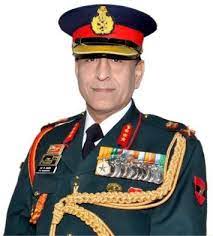

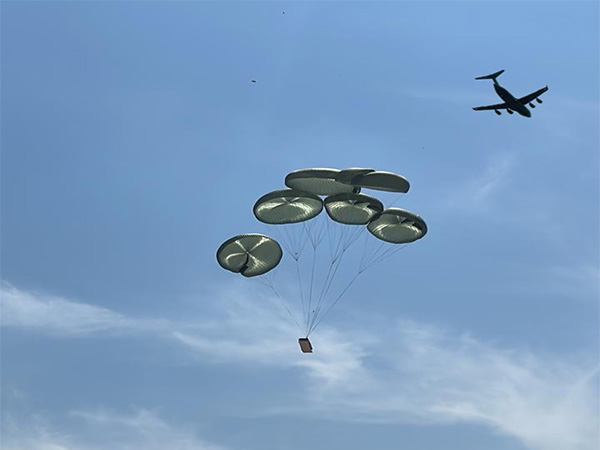
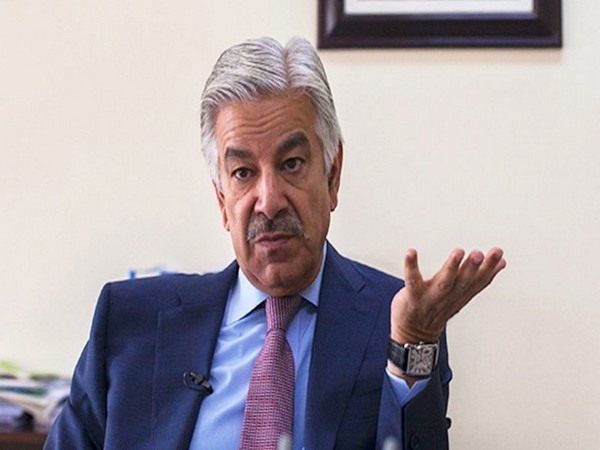
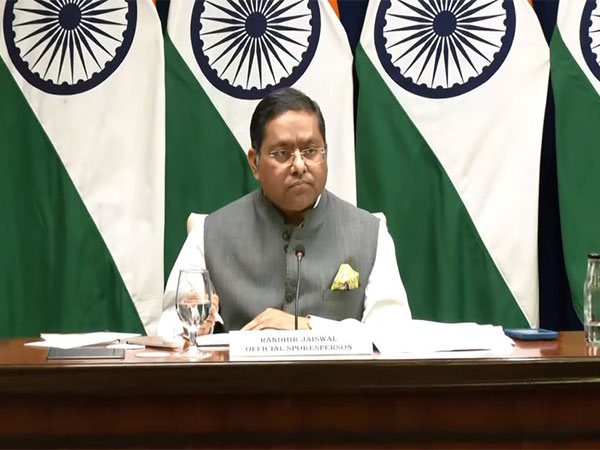



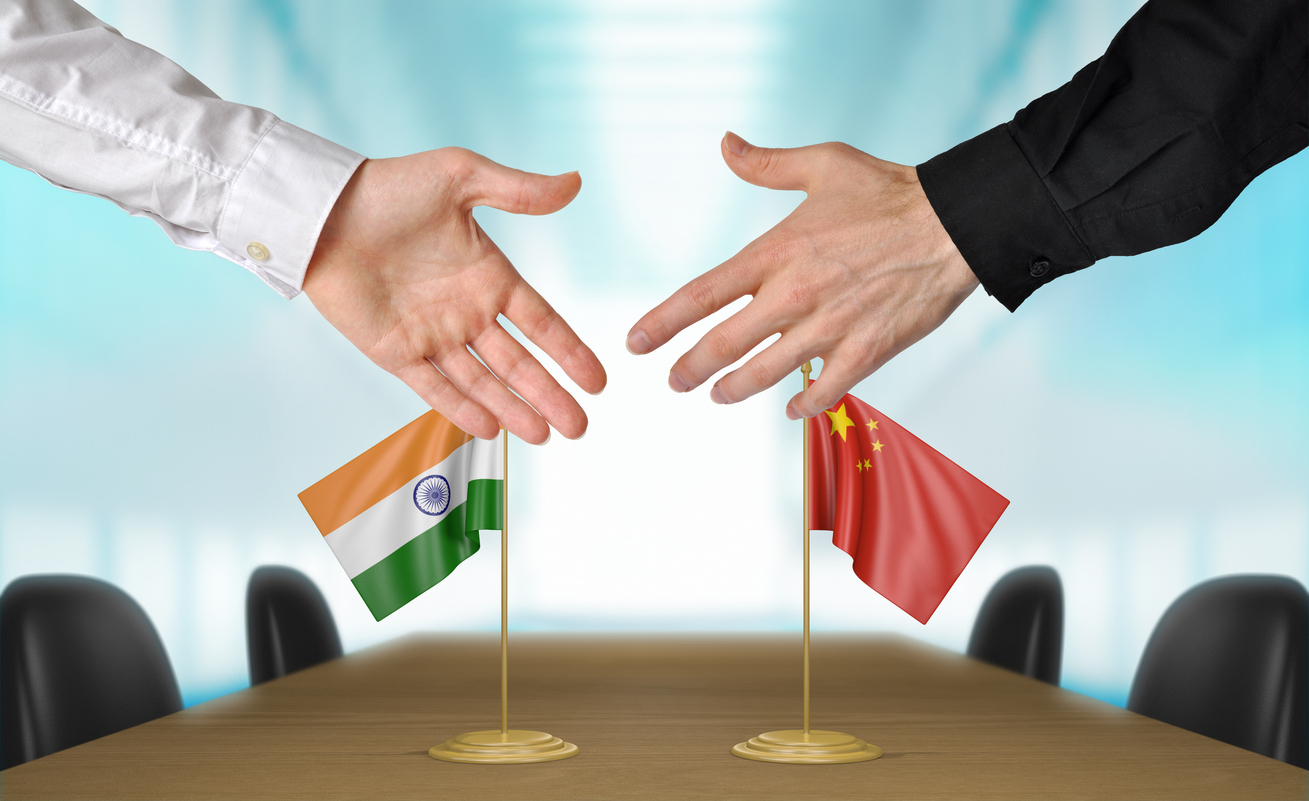

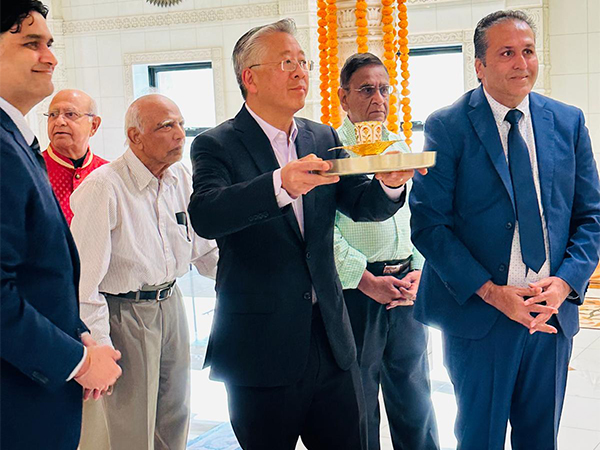
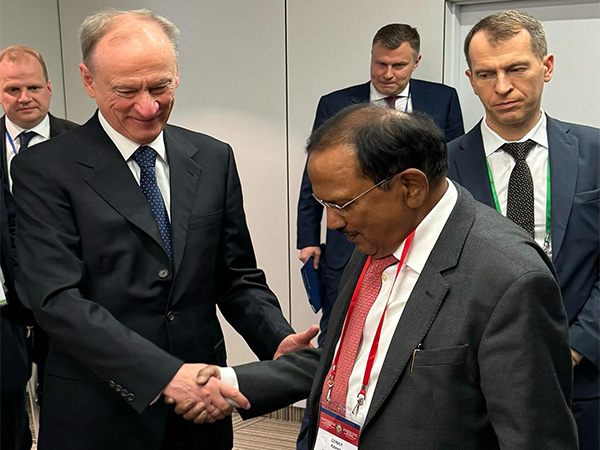






POST COMMENTS (0)